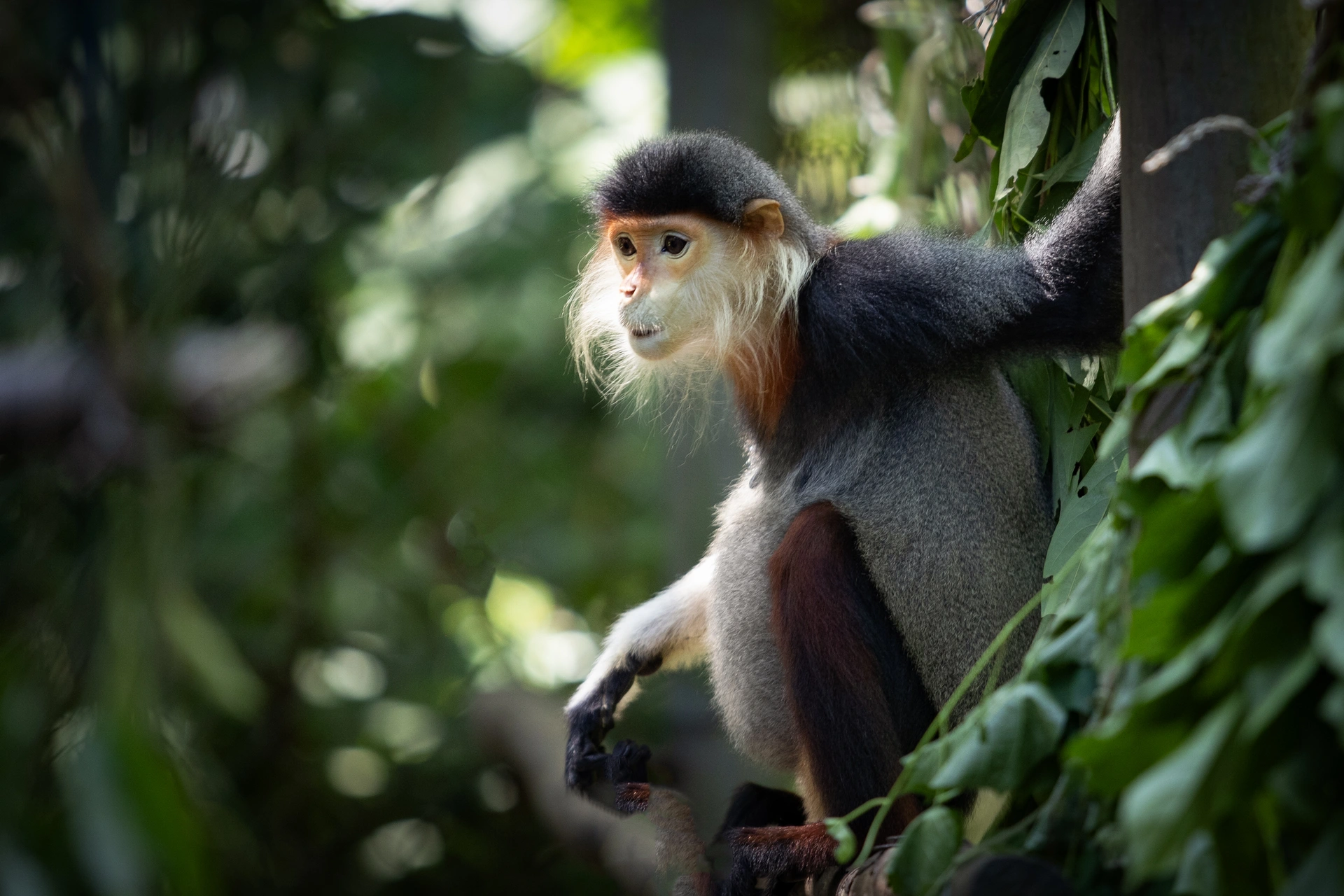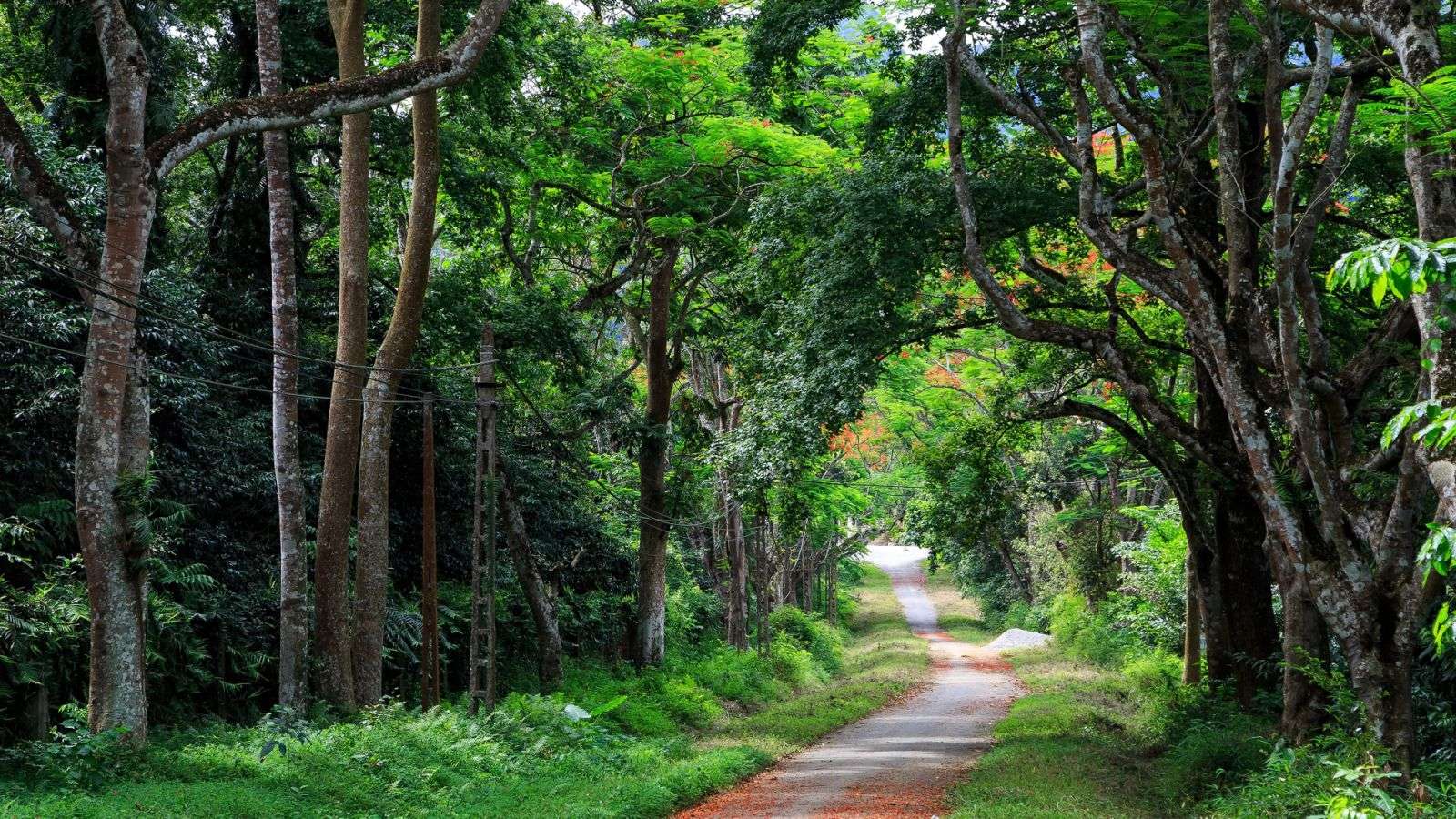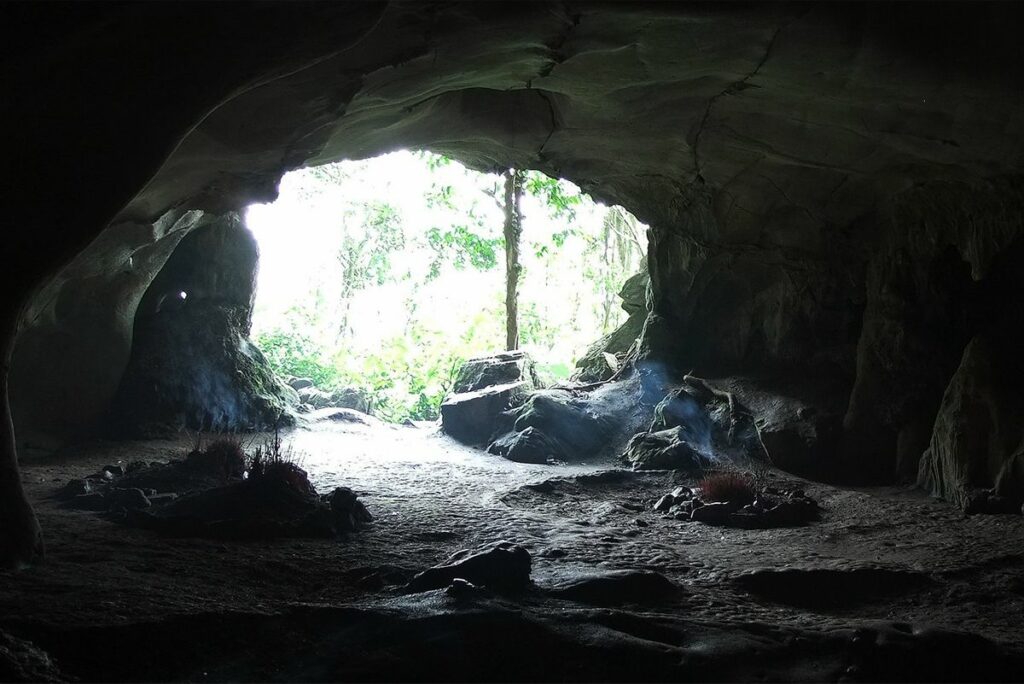Cúc Phương National Park (Cúc Phương Forest) is a protected nature reserve and special-use forest in Vietnam. It is home to a rich diversity of flora and fauna, characteristic of tropical rainforest ecosystems. Many endangered species have been discovered and are being preserved here. Cúc Phương is also a famous eco-tourism destination, attracting hundreds of thousands of visitors each year. Tourists come to explore the biodiversity, admire the natural landscape, and take part in activities such as eco-tours, retreats, camping, adventure tours, and cultural-historical research. Cúc Phương was honored as Asia’s Leading National Park by the World Travel Awards for five consecutive years from 2019 to 2023
Climate
Cúc Phương National Park has a tropical monsoon climate, typical of Northern Vietnam, with an average annual temperature of 24.7°C. Thanks to its varied terrain, predominantly covered by primary forest, the park remains cooler than surrounding areas. Visitors can travel to Cúc Phương at different times of the year. The dry season (September to December) is ideal for trekking and camping, while the rainy season (April to May) is famous for the breathtaking sight of thousands of white butterflies and fireflies lighting up the forest.
Transportation
Cúc Phương National Park is located about 130 km from Hanoi, with convenient access taking approximately 2.5 to 3 hours by car. Travelers can take the CT01 expressway, then exit onto National Route 1A at Phủ Lý and continue along Provincial Route 477. Another option is to travel via the Ho Chi Minh Highway.
From Ninh Bình City, tourists can pass through Tràng An to Bái Đính Pagoda (15 km), then follow the road behind the Bái Đính parking area to reach Cúc Phương (about 25 km). The road is wide and sees little traffic.
Animals in Cuc Phuong National Park
With 307 bird species, 133 mammals, 122 reptiles and more than 2000 different plants, this national park is one of the most important protected areas of Vietnam. The park was established to protect animals, including tigers, leopards, bats, pigs, civet cats and flying squirrels and the endangered Delacour langur. Unfortunately poachers and habitat destruction are tormenting the park. Better roads have led to illegal logging and many indigenous species such as the Asian black bear, the Siamese crocodile, the wild dog and the tiger have now disappeared from the area. Other wildlife is very rare to see, so adjust your expectations.
Even without seeing these large animals in the wild, you can get an idea of the wide variety of insects and plants in the park. Some trees reach more than 50 meters high and are estimated to be more than 1000 years old.

Endangered Primate Rescue Center
Some of the “happier” victims of the illegal hunting in Vietnam can now be found in the Endangered Primate Rescue Center near the entrance. The center, opened in 1993, not only looks after rescued animals, but also tries to rehabilitate them by releasing them into an adjacent semi-wild area. In addition, the center manages crucial research, conservation and breeding programs.
At any given moment there can be between sixty and one hundred animals, including Delacour’s langur, the Cat Ba or golden yellow langur, and the gray pasted douc langur, as well as various lori and gibbons; a unique opportunity to see these incredibly rare species up close.

Cuc Phuong National Park highlights
1. Trekking

The main reason for going to Cuc Phuong National Park is a trekking through the nature. There are many different treks, ranging from short 1 hour walks to full day trekking. At the visitor center you can ask for different trails. Some trails go to caves, villages, rainforest, lake and bird watching. Below a few of the trekking routes:
- Fauna and flora garden. The trail is approximately 3 km long and lasts a maximum of 2 hours.
- Observation tower: a short walk up the mountain with a beautiful landscape that takes about 1 hour.
- Other short walks are a route of 220 steps to the cave of prehistoric man. Human graves and tools are 7500 years old, making them one of the oldest sites for human occupation in Vietnam.
- Popular walks are a 6 km walk to the huge, 1000-year-old “old tree” (Tetrameles nudiflora) and a longer four-hour walk to Silver Cloud Peak.
- There is also a long 15 km (approximately five-hour) walk to Muong village. You can spend the night here with local families and rafting on the Buoi River.
Tips
- Night camping requires the help of a guide from the park and the locals, including watching wildlife at night. Camping equipment must be rented in Hanoi.
- Park staff can deliver maps, but a guide is recommended for day trips and mandatory for longer trips.
2. Kayaking

There are two places where you can go kayaking; on the artificial Mac lake or the natural Yen Quang lake. Kayaks can be rented directly at the park entrance.
3. Traditional music performance
Cuc Phuong National Park has been settlement for many generations of the Muong minority. These people have their own unique culture. To show and preserve a part of their culture they have traditional music performances by young Muong girls and boys who live around the park.
4. Amphibians, insects and reptiles spotting

The national park is home to many different species of insects, amphibians, and reptiles, which many of them are endemic to Vietnam. Some animals you can see are green tree frog and stick-insects.
5. Cycling

One of the best ways to explore Cuc Phuong National Park is by biking through the jungle. Cycling gives you the change to see a larger part of the park in a shorter time and is also a great way to see the more secretive animals and birds of the park. You can rent mountain bikes at the visitor’s center.
6. Bird watching
Cuc Phuong National Park is home to many beautiful tropical birds. Some of the 308 species of rare birds that you might encounter are the Silver Pheasant, Red-collared Woodpecker, Brown Hornbill and Bar-bellied Pitta. The park is a must-vist destination for birdwatchers. The best time for bird-watching is early in the morning or in the late afternoon.
7. Wildlife night-spotting
There are night safaris through the forest. These night tours give you the change to see the more difficult to spot animals of the park including the Black Giant Squirrel, the Indian Flying Squirrel, Samba Deer, Loris and several small carnivores.
8. Caves

The limestone formations produced numerous caves, many of which are accessible to explore. Three graves dug up in one of the caves in 1966 contain shells, animal teeth, rudimentary stone tools and prehistoric human remains. The most known caves in the park are Thang Khuyet Cave, Con Moong Cave, Pho Ma Cave, Nguoi Xua Cave and the Cave of Prehistoric Man.
What to bring
Walking shoes for the slippery paths is highly recommended. Bring lots of anti-insect agents. It is also advisable to take a bottle of water with you, because the walk can be strenuous. Along the way there are stone tables along the hiking trails that are ideal for a picnic meal.
Opening times: daily from 9:30 AM to 11:30 AM and from 1:30 PM to 4:30 PM
Best time to visit
The best time to walk in Cuc Phuong National Park is from October to January, when mosquitoes and leeches take a break and the temperatures are relatively cool, but this is also the peak season. Flowers are at their best in February and March and in April and May are the months in which you can enjoy the “butterfly festival” where thousands of butterflies color the forest.
Accommodation in Cuc Phuong National Park
It is also possible to spend the nigh in the National Park. There are three places with accommodation in the park, which are the Park Headquarter, Mac lake and Park Center. Accommodation in the park center means you stay far away from civilization in between the rain forest. Close to Mac Lake is very relaxing with good places for biking. Staying at the Park Headquarters can be handy, because you are right next to the park information and all the activities start from here, including night-spotting, kayaking, traditional music performance and trekking and bike tours.
The rooms and bungalows are not very luxurious, but modern, nice and clean. Prices start from $15 but go up in weekends and holidays.
EcoTravel is honored to come with you to enjoy this unique temple!





